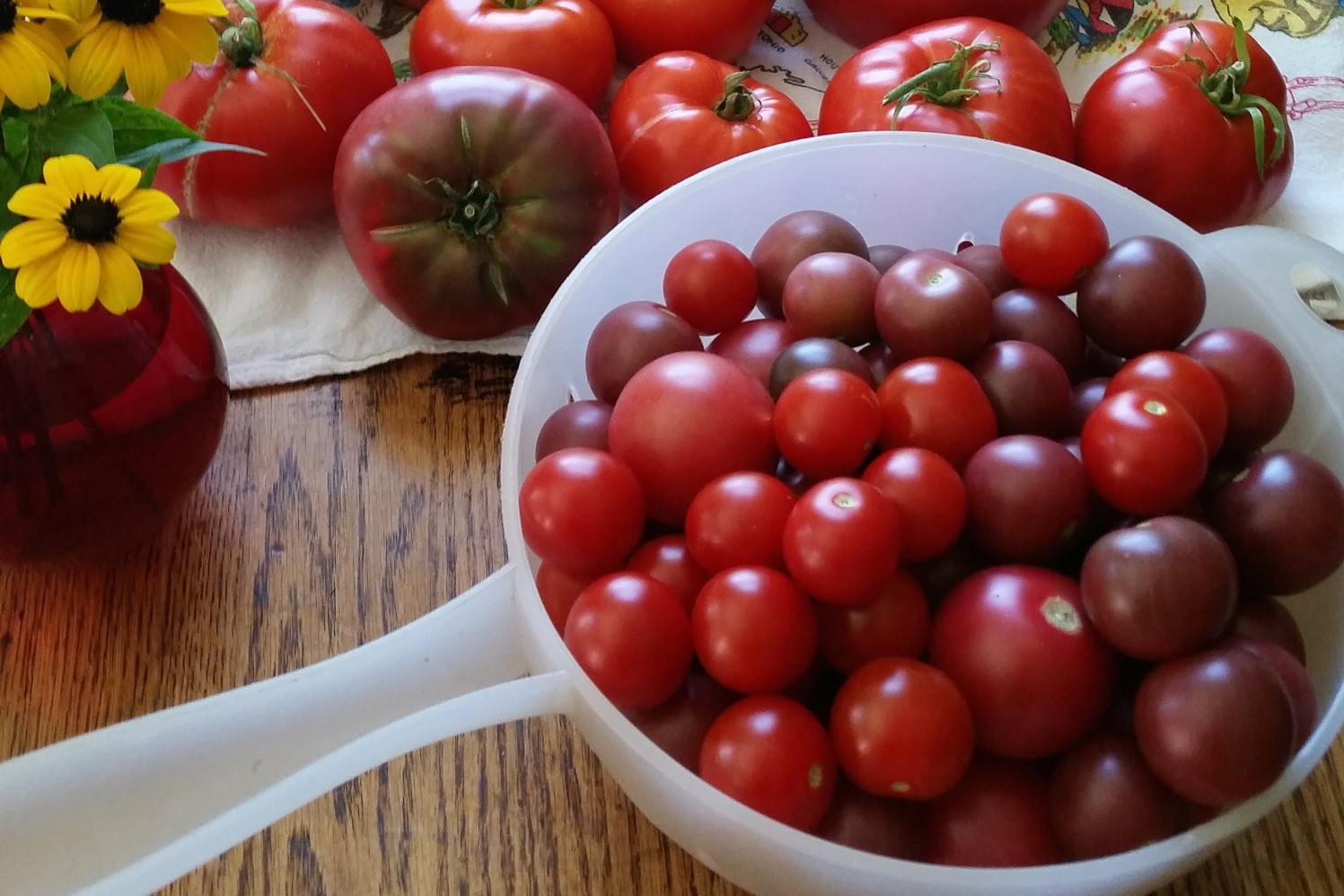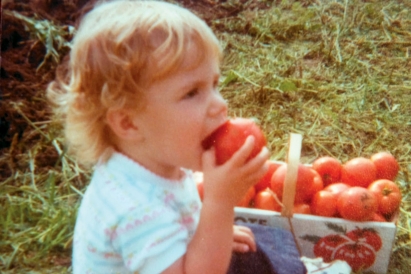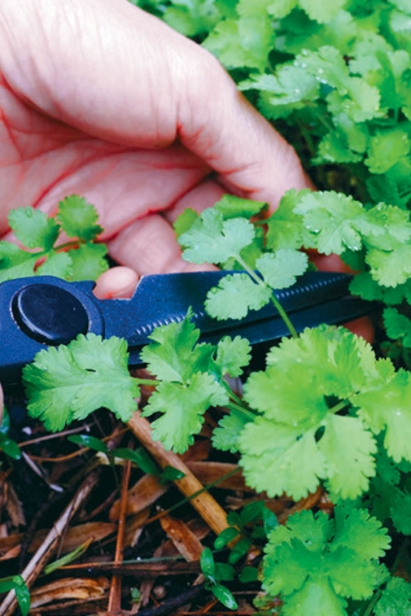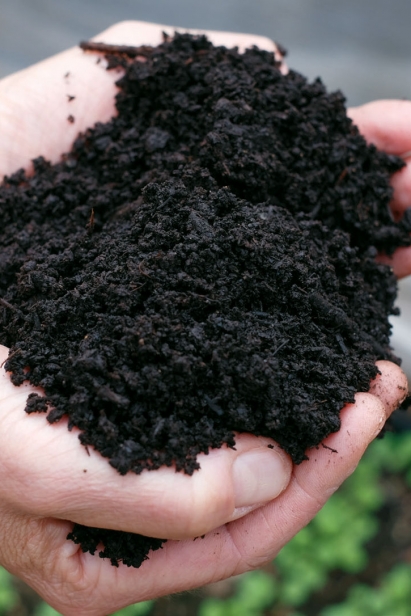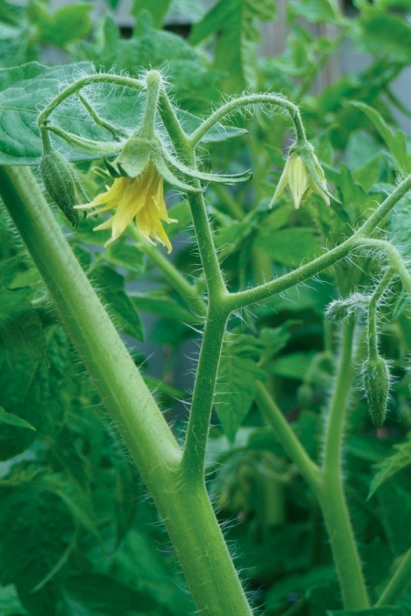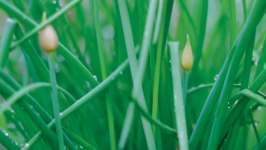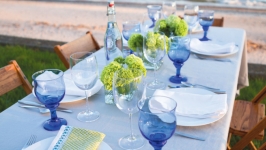An Erie Gardener Connects to Her Roots through a Backyard Garden
There's a photo of me as a toddler, smiling at the tangy sweetness I'm savoring from my first bite of a giant homegrown tomato. Deep red pulp surrounds my kid-clumsy mouth while fragrant juice drips down chubby cheeks toward my chin (and, unfortunately, the white shirt I'm wearing).
I asked my dad what inspired the little garden in our side yard in southwestern Erie County, Pennsylvania. "It was just nice to go in the garden and eat a tomato–to have carrots out of the ground in cold weather, and onions and grapes. We grew celery just to smell it. It was nostalgic."
Maybe nostalgia fueled my first turning of the earth in the Erie backyard I share with my husband, too.
But I'm not one of those people who matriculated into adulthood with gardening knowhow, or a mental rolodex of recipes. As a teenager I practically ran kicking and screaming from the room if anyone tried to impart domestic wisdom onto me. It wasn't until my mid-30s that I'd even eaten Swiss chard, let alone grown and then cooked it.
Of course, I could've hung around as my grandma made sauce from the backyard tomatoes she'd canned, or volunteered when it was planting time. Such humility would've saved me a wheelbarrow load of humbling food failures a few decades later.
But knowing that some of the fruit and veggies I grow have been cultivated by my family's hands since long before I was born provides comfort and rootedness–antidotes to this sometimes isolating world.
My dad remembers his parents' garden in North East as backbreaking come spring, when that 10-by-40-foot plot of rocky ground was turned manually with a four-prong spade.
My Polish grandma and Italian grandpa grew mostly tomatoes, but also hot banana peppers, dill, garlic, onions, parsley and other herbs.
"It was a cultural thing," my dad says. "Everyone had a garden like this in their backyards."
And they canned everything: pears, peaches and especially tomatoes. Grandma would start making spaghetti sauce on Saturdays with homegrown tomatoes she'd preserved in Mason jars, plus homemade meatballs, and then Sunday was spaghetti with meatballs day.
Things weren't always easy for my dad's "kind": Italian and Catholic. But North East remains heavily populated by Italians, many of whom settled in the area at a time when work could be found harvesting grapes, cherries, apples and peaches, and when multiple canneries operated nearby. My grandparents even sold backyard tomatoes to a cannery.
Today, if Dad wants fresh tomatoes, he grows them in pots–or gets them from me. In winter, I give him jars of pressure-cooker tomato sauce from our freezer. It's nothing like Grandma's, but at least it's homemade.
I used to think in limited terms about the weather, never considering how a garden's proximity to everything from a south-facing wall to our Great Lake Erie profoundly influences its growing season.
Now the calendar year has taken on a richness–one every gardener knows. In early spring, when parkas still stuff the coat closet, I poke peas and spinach seeds into the workable soil of one of the more protected beds. In a simple cold frame topped with two old windows, fast-growing arugula and leaf lettuce jumpstart our summer salads.
A couple weeks later, early enough that they'll mature before the summer heat and late enough that they won't rot under another round of snow, tough-as-nails kale, mâche, arugula and leaf lettuce seeds are sown slightly below the soil's surface. By then, I'm usually able to harvest chives, oregano, thyme and parsley just emerging from hibernation.
Garlic planted in November reaches sunward, and cilantro I'd let go to seed volunteers itself for whatever verdant spring dishes we're dreaming up. By late April, most years, nasturtium, cilantro, Swiss chard and another round of arugula and lettuces are sown in the richly fertile beds, made more so by the compost created by their forebears.
In late April or May, mature spinach and salad greens get new roommates, as it's time to plant the summer's tomatoes. Eventually, heat makes the greens bolt, and their move to the compost pile means room for basil seeds or seedlings I've started inside. Garlic scapes are gathered for pesto, hot peppers in clay pots line the deck, and dill and other herbs are sown in succession for a summer-long supply.
Around mid-July, I dig the garlic for curing, with an eye out for bulbs that are vigorous enough to become next year's seed. Leafed-out trees shade the backyard for part of the day, so it's cool enough to sow a few more rounds of salad greens and cilantro. Soon, fall crops of kale or spinach begin their journey from seed to soup.
Throughout August and September–and even beyond into October, given our changing climatetomatoes dominate counter space, urging us to process them.
We pressure cook them into sauces with whatever other flavors are available from the backyard that day or slow roast them into confit with olive oil, garlic and herbs; or we lazily toss them whole into baggies in the chest freezer, to be pulled out and quickly boiled awake for slow-cooker curries. And we eat them fresh, like I did as a toddler.
Those still green when fall frosts arrive find new homes in cardboard boxes lined with newspaper. They share space with a couple of bananas, whose ethylene encourages ripening. Last year, we ate our last freshly-picked tomatoes on Christmas Eve.
It usually feels like we'll never get through them all. I think about my grandparents' tomato-lined backyard, compared with our six or eight plants. What comfort must have been felt in August, when Grandma looked out on those red-studded vines, assured she'd be serving homemade sauce to her four children throughout the winter.
For decades, Erie has been known as a community that welcomes newcomers and refugees–many of whom came from cultures where backyard edible gardens were "just what they did," too. As I plunge my hands into warming soil, pick snow peas on the perfect day, or head out in the slanted morning light to gather greens at their freshest, I feel that heritage.
I'm only one bent-backed gardener, on one tiny plot, in the northwestern corner of Pennsylvania. But my hands reach back through the years to everyone who has worked this soil before, everyone who carried seeds across the Atlantic on their way to a new America, and everyone who will someday plant seeds where I once lived.


